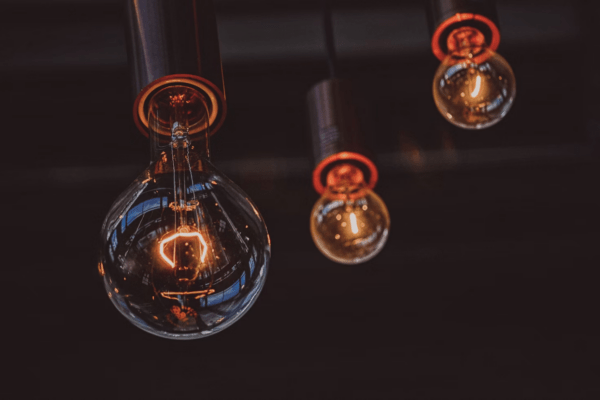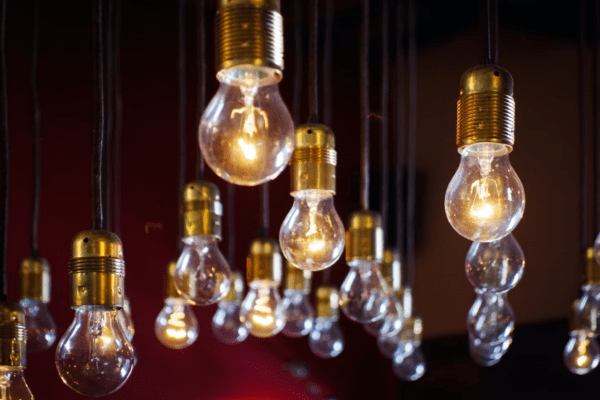
Saving energy can have major benefits for both the environment and your wallet. Making small changes like switching to LED lighting, plugging in appliances that require power on standby mode and sealing air leaks will all help reduce electricity use at home.
Power conservation is often discussed, yet few fully grasp its implications. Although saving power may seem like a chore, its benefits go well beyond saving money; conserving energy has the ability to mitigate environmental damage, stop global warming, and even save lives.
Consider purchasing appliances that make use of renewable power sources like solar and wind power. Opting for washers/dryers that use less water for laundry purposes as well as investing in low-flow showerheads can save money on utility costs.
Switch to LED Lighting
Lighting consumption accounts for a considerable portion of your electric bill, and making the switch to LED bulbs can help significantly lower this figure. The University of Michigan says that, on average, they use approximately 90-88% less power than traditional incandescent or halogen lighting and 60-70%) less than traditional fluorescent lighting.
LED bulbs are more reliable and long-lasting than their incandescent or halogen counterparts, saving both money and maintenance expenses over time. Switching out all existing incandescent for LEDs has the potential to decrease energy usage by 13-15 percent – and will have a dramatic impact on your monthly electric bill!
Many places in Norway provide incentives for switching to LED lighting, and you might even find some rebates through your electric company. These rebates make switching affordable without spending too much at once; and will give your lighting system an immediate return on investment.
LEDs also save power because they don’t produce as much heat, unlike traditional bulbs that waste energy and generate waste heat that penetrates to your ceiling and poses potential safety risks. Conversely, LEDs emit only minimal amounts of heat that prevent your space from heating up unnecessarily while requiring less costly air conditioning systems for keeping cool.
Finally, another way to reduce power usage and costs is to invest in LED bulbs that are dimmable. According to information linked on this site – bestestrøm.no/hvordan-spare-strøm/, dimmable lights are a good choice as they allow you to set their brightness at lower levels to lower their energy use while giving off more comfortable illumination at reduced costs. You could even look into lights that have “warm dim” settings that mimic how incandescent bulbs look when turned down – further cutting costs while offering you more comfortable illumination.

Automate Your Lights
Home lighting automation can help save both power and money at home. By scheduling your lights to turn off or dim at precisely when needed, and at exactly the right brightness level. This way you won’t forget to turn them off before leaving for work and won’t need to worry about leaving lights on in an abandoned home while away.
As smart light bulbs make home lighting automation accessible, smart light bulbs make starting off easy. They’re usually as simple as screwing the specialty bulbs into an existing fixture and using its smartphone app for control. Lots of companies offer the app for free but check beforehand. It’s the easiest way to get acquainted with smart-home options without undertaking an intensive rewiring project.
Once you’re ready to upgrade further, replace conventional switches and outlets with smart versions. Your bulbs may still need changing, but now they can be controlled remotely using smartphones or other devices. Smart plugs can also add smart features to traditional appliances like lamps or fans and be managed using smartphone apps or smart home hubs; some models even respond to voice commands from smart speakers!
Lots of smart light systems offer pre-loaded automation to set a schedule for your lights, such as wake-up, going to sleep and coming home recipes. You can also create custom automation using their app’s Automations tab – something a lot of robotic “home-helpers” are starting to do, nowadays!
Other smart light systems even provide more advanced capabilities beyond traditional schedules. Their geo-location technology uses geo-fencing to sense when you leave and arrive, turning on or off lights as necessary. You can even program random timed activations of lights while away to give the impression someone is home.

Harnessing Solar Power
Incorporating solar panels into your home is a transformative step towards embracing sustainable energy. Solar panels harness the sun’s energy and convert it into electricity, providing a renewable and eco-friendly alternative to traditional fossil fuels. By installing solar panels on your rooftop or property, you can generate clean, renewable energy to power your home’s electrical appliances, lighting, and heating systems.
One of the most significant advantages of installing solar panels is the reduction of your carbon footprint. Solar energy is a clean and renewable energy source that produces minimal greenhouse gas emissions compared to fossil fuels. By generating electricity from sunlight, solar panels help mitigate climate change and reduce air pollution, making a positive impact on the environment and the health of future generations.
In addition to its environmental benefits, solar energy can also lead to substantial financial savings for homeowners. By generating your electricity with solar panels, you can significantly reduce or even eliminate your monthly utility bills, depending on the size of your solar system and your energy consumption. Furthermore, solar panels can increase the value of your home and provide a solid return on investment over time, as they typically have a lifespan of 25 years or more.
Finally, another significant advantage of installing solar panels is the availability of tax incentives and credits at the federal, state, and local levels. The federal government offers a solar Investment Tax Credit (ITC), which allows homeowners to deduct a percentage of the cost of their solar system from their federal taxes. This applies to everyone, regardless of whether you use a tax preparer or do your free taxes online by yourself. Additionally, some states and municipalities offer additional incentives, such as rebates, grants, or property tax exemptions, to encourage the adoption of solar energy.
Turn Off Your Electronics When Not in Use
Left unplugged appliances and electronics can be one of the primary factors leading to high electricity bills. On average, households typically have 40 gadgets plugged in that consume electricity even when not turned on – known as “phantom power use” this amount accounts for 10% of household energy costs; but unplugging devices you are no longer using can significantly decrease this figure.
At first, it may be difficult to pinpoint exactly which devices are using too much electricity, particularly those which do not stand out as obvious power wasters. A handheld electricity monitor is an effective way of doing just this and will display any wattage used directly onto its screen.
Common devices that people forget to unplug after each use include microwaves, TVs, alarm clocks, traditional lamps and phone chargers; making a habit out of unplugging these items every time after finishing using them can save your electric bill as well as help the environment!
Electronic appliances that consume constant energy include printers, fax machines, docking stations, musical instruments, electric toothbrushes and gaming consoles. Though these appliances may not draw as much power as TVs and video games, they still consume an immense amount of power and should be unplugged each night or when you aren’t present to conserve energy usage.
It is wise to set an alarm each night or when leaving a room in case any software updates require power or servers are used up for updates etc. To be safe it would be prudent to unplug each appliance or electronics whenever you leave that room for best practice and energy conservation purposes!
Before embarking on any extensive travels, unplugging most devices in your home is a straightforward and efficient way to save power costs and protect electronics from power surges that could otherwise cause damage and shorten their lifespans. For devices you feel must remain plugged in such as important computers and appliances with vital functions, consider investing in surge protectors as protection against power spikes, or consider purchasing power-efficient appliances and devices from Energy Star-rated stores to reduce power use as much as possible.

Reduce Your Appliance Use
Refrigerators and clothes dryers consume the highest energy consumption within any household, with refrigerators being particularly wasteful of resources. You can cut their electricity use while saving money by choosing appliances with an Energy Star rating – these models have been specifically engineered to use less electricity and therefore need less power overall, helping the environment while saving your wallet!
Unplugging devices that aren’t being used can also save energy, including appliances like your TV, computer and microwave. This is because many appliances feature standby mode which continues to consume power even when they aren’t needed; this phenomenon is known as phantom power or shadow loads; over time this adds up and adds to your electricity bill each month. Unplugging these appliances prevents them from siphoning off energy unnecessarily – saving both energy and money over time.
Making informed purchasing decisions when it comes to new appliances means taking note of their energy consumption and operating costs, including their Energy Star ratings and annual operating costs. A refrigerator, for instance, may cost as much as twice its initial purchase cost to run every year after its lifetime is up. Energy Star-rated devices tend to consume 20% less electricity while being up to 35% more energy efficient than non-labeled models.
Other ways to save energy include cooking at a lower temperature, opening windows in warmer weather and closing them when it cools off again, using a ceiling fan with a reverse function, switching to LED lighting and adapting heating/cooling usage to match weather patterns; time-of-use tariffs which reward you for shifting away from peak times may also save money.